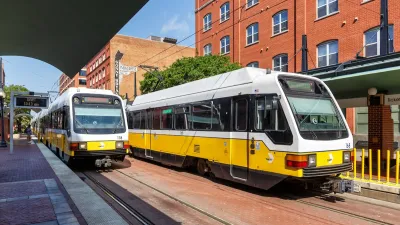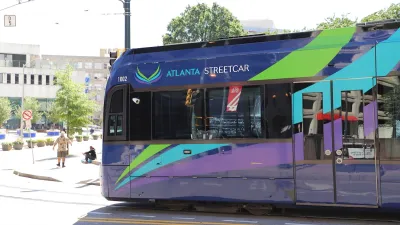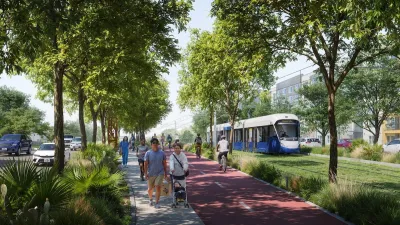After decades of planning and development of its urban rail networks, will the American West change its image from car cornucopia to transit paradise?
After many decades (and many billions of dollars spent), urban rail networks in American West Coast cities are finally coming-of-age. San Lubell and Ariel Rosenstock, of the Architect's Newspaper, report, "[n]ew lines, stations, infrastructure, and transit-oriented developments are popping up and in planning stages in and around Seattle, Portland, San Francisco, Sacramento, Los Angeles and San Diego. And if you count West Coast–adjacent cities such as Phoenix and Denver, there are even more."
Not only are cities seeing increases in the size of their transit infrastructure, existing transit lines are seeing increased ridership numbers. Lubell and Rosenstock find, "[a]ccording to the American Public Transportation Association, from 1995 through 2010, public transportation ridership increased by 31 percent...perhaps the most compelling reason for the expansion is the crippling impact of traffic in the region and in the country, and its accompanying demons-sprawl, pollution, and climate change."
But are West Coast cities the next transit utopias? Don't bet on it just yet. "Besides pockets of underuse, rail and light rail are still far from reaching the tipping point on the West Coast," say Lubell and Rosenstock, "In LA, for example, 80 percent of the city's residents still don't live within convenient distance to rail [and] slower returns from Measure R's tax-related funding have forced the completion of LA's Purple Line subway extension beyond 2030."
Still, as it transforms municipal land use patterns, rail's return to the West is worth paying attention to. Read the details of each city's progress in the Architect's Newspaper article.
FULL STORY: Feature> On The Right Track

Alabama: Trump Terminates Settlements for Black Communities Harmed By Raw Sewage
Trump deemed the landmark civil rights agreement “illegal DEI and environmental justice policy.”

Study: Maui’s Plan to Convert Vacation Rentals to Long-Term Housing Could Cause Nearly $1 Billion Economic Loss
The plan would reduce visitor accommodation by 25% resulting in 1,900 jobs lost.

Planetizen Federal Action Tracker
A weekly monitor of how Trump’s orders and actions are impacting planners and planning in America.

Wind Energy on the Rise Despite Federal Policy Reversal
The Trump administration is revoking federal support for renewable energy, but demand for new projects continues unabated.

Passengers Flock to Caltrain After Electrification
The new electric trains are running faster and more reliably, leading to strong ridership growth on the Bay Area rail system.

Texas Churches Rally Behind ‘Yes in God’s Back Yard’ Legislation
Religious leaders want the state to reduce zoning regulations to streamline leasing church-owned land to housing developers.
Urban Design for Planners 1: Software Tools
This six-course series explores essential urban design concepts using open source software and equips planners with the tools they need to participate fully in the urban design process.
Planning for Universal Design
Learn the tools for implementing Universal Design in planning regulations.
Caltrans
Smith Gee Studio
Institute for Housing and Urban Development Studies (IHS)
City of Grandview
Harvard GSD Executive Education
Toledo-Lucas County Plan Commissions
Salt Lake City
NYU Wagner Graduate School of Public Service





























